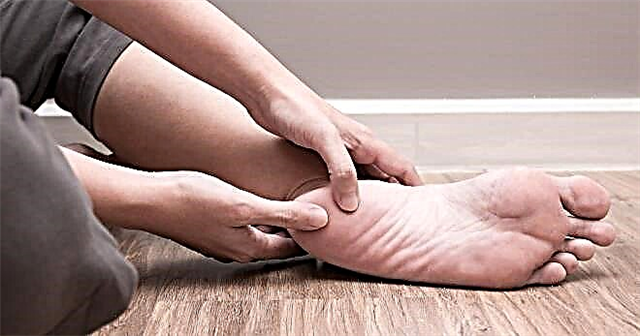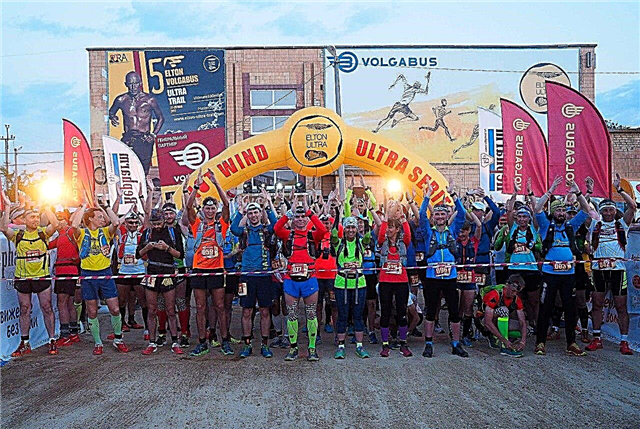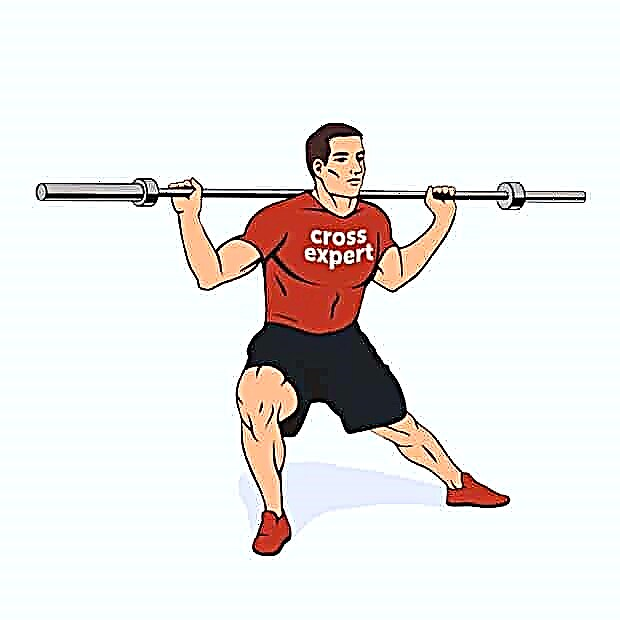Are you interested in running? If you went to this page, then it is so. Middle distance running is a great speed sport. This is a very exciting activity that brings a person cheerfulness, optimism and personal achievement. I must say that this is a long and interesting journey.

But at the same time, it is thorny and tense, concealing many surprises. The training process requires tremendous effort and hard work from the runner. On this path, there can be injuries and various failures. But the one who is morally strong and courageous will certainly pass it and achieve the goal.
If in sports there is a huge and insatiable desire to fight, then success will certainly come. As elsewhere in teaching, everything starts with theory. For a beginner, it doesn't hurt to learn about the basics of athletics.
About medium distances
Medium runners are considered the most enduring and persistent, since 800, 1000, 1500 m are considered the most uncomfortable and difficult. Such peaks will be conquered only by athletes with an exceptionally iron character, because throughout the entire running segment, you need to maintain a sprint pace, where the speed reaches its maximum marks.
Distances

Average distance in athletics includes such disciplines as running on 800 m, 1000 m, 1500 m, 2000 m, 3000 m and 3000 m with obstacles. In some countries, such distances include 1 mile running.
I must say that about 3000 m there are irrepressible disputes among specialists, many of whom consider it to be long. The Olympic program includes 800 and 1500 m races.
What drives athletes to achieve better results? Motivation. She is as old as humanity. Sports feats have been performed since the very first Olympics. But it was only in the middle of the 20th century that they began to keep accurate records of running records.
Competitions are held in different conditions:
- closed rooms;
- on open air.
Therefore, indicators must be distinguished. The difference in them is tangible, although it differs by seconds and fractions of seconds.
World records

The most spectacular view is the 800 meter race. For about a minute, the stadium gets excited, trembles, and is completely delighted with the athletes' struggle at this distance. According to the chronology of the results, the first world record holder was the American athlete Ted Meredith, who set him in 1912 at the London Olympics.
In modern history, Kenyan athlete David Rudisha is considered the king of this distance, who set the record at 800 m three times.His best time stopped at 1.40.91 m.
For women, the record holder since 1983 is Yarmila Kratokhvilova - 1.53.28 m. Yuri Borzakovsky is considered the record holder of the domestic format - 1.42.47 m (2001).
Medium-distance running technique

Despite all the seeming simplicity of running, it is necessary to focus on this issue. Errors in running technique usually lead many athletes to injuries and diseases of the musculoskeletal system. Bridging such a distance requires incredible effort. Technique plays a key role in achieving success.
And perfect technique requires leg strength, incredible endurance and focus throughout the run. Mastering an excellent running technique can take even years of training until a person arrives at his ideal.
Technique at such distances is mastered by elements. The following training elements are distinguished:
- start;
- starting accelerating segment;
- running in the middle of the distance;
- finish.
Start carried out from a high position, with the pushing leg back. The body is tilted forward. The arms should also take their natural starting position. The starting speed should be close to the maximum mark.
The further position on the treadmill of the competitor depends on this. By this, he creates a gap from the rest of the participants, to create a favorable space for himself. Approximately, after the first hundred meters, the transition to remote speed.
Hands move along the body and are not scattered to the sides, the body is slightly inclined forward, the stride length is average. The stride length is determined by the athlete himself, based on considerations of comfort, but not at the expense of technique. The upper body should be as relaxed as possible so as not to expend extra energy. It is difficult for beginners to do this, but it comes later with experience.
The distance ends finishing... Athletes decide for themselves when to make the final spurt. In the last 100 or 200 m, the tilt of the body increases, the cadence and breathing become more frequent. At the finish line, the runner's speed becomes sprint.
Features of running on a bend
Cornering speed is reduced as simple laws of physics come into play. In the winter season and indoors on short tracks, the speed drops even more.
In arenas, the stride length is shorter and higher energy costs, which are spent on tilting the body when the track bends to the left. Place the foot more firmly on a bend to maintain the correct direction vector.
Training system for "average"

Here is a general training plan for medium distances and is more suitable for beginners. Individual systems are built for the majority of sportsmen of dischargers. In addition, the training criteria for 800 m differ from the criteria for 1500 m.
Training programs are divided into cycles or phases:
- annual;
- 3 months;
- semi-annual.
The program is divided into 4 training phases and microcycles
Phase number 1 preparatory

This phase is aimed at the fundamental foundations of the development of the functional training of the runner. Here the tasks of increasing the indices of physical fitness are set. Phase 1 plays a very important role in the entire preparation process. If an athlete has had a long break or a person has just started exercising, then, first of all, the risk of overload must be eliminated.
As always happens, desire wins, but the body is not ready for it. And as a result of a sudden start with an enthusiastic and irrepressible impulse, hurtful injuries can occur. The length of this phase depends on the number of competitions in the total period and is usually 5 to 9 weeks.
In this initial phase, sharp accelerations and running at a high heart rate are excluded. Slow runs and special running exercises to increase leg strength are preferred. Phases or cycles are also subdivided into microcycles.
Approximate weekly plan for phase 1 of the first microcycle
Monday: Warm-up part 15 min
- Cross 5-7 km
- General developmental exercise
Tuesday: Game sports (football, volleyball, basketball)
- Two-legged and one-legged jumps
- Strength exercises for the muscles of the back, abdomen and legs.
Wednesday: Warm-up part 15 min
- Run 2000-3000 m
- Light acceleration of 100 m with a slight increase in heart rate
Thursday: Warm-up part 15 min
- Cross 5-7 km
- General developmental exercise
Friday: Warm-up part 15 min
- Special running exercises
- Strength exercises for the muscles of the legs and back
Saturday: Cross 10-11 km, rest every 2-3 km for 1-2 minutes with a transition to a normal step
Sunday: Leisure: swimming pool, walking.
Approximate weekly plan for phase 1 of the second microcycle
Monday: Warm-up part 15 min
- Cross 5-7 km
- General developmental exercise
Tuesday: Game sports (football, volleyball, basketball)
- Two-legged and one-legged jumps
- Exercises with barriers
- Strength exercises for the muscles of the back, abdomen and legs
Wednesday: Warm-up part 15 min
- 3-4 km-loop
- Light acceleration of 200 m 9-10 times with a slight increase in heart rate
- Strength exercises for the muscles of the legs
Thursday: Warm-up part 15 min
- Cross 7-8 km
- Special running exercises
- General developmental exercise
Friday: Warm-up part 15 min
- 3-4 km-loop
- Acceleration 200-300 m
- Jumping exercises for leg muscle strength
Saturday: Cross 10-11 km
- General exercise
Sunday: Leisure: swimming pool, hiking
Phase number 2 preparatory

Phase 2 is aimed at increasing the volume of training loads. From this point on, it is necessary to keep a training diary, where all indicators of each training session will be recorded. This stage of the program includes already strenuous running at a high heart rate.
Approximate weekly plan for phase 2
Monday: Warm-up part 15 min
- Cross 7-9 km
- Acceleration 100 m 10-12 times
- General developmental exercise
Tuesday: Running in deep snow
- If there is no snow, then fast cycling
- Strength exercises for legs and arms
Wednesday: Warm-up part 15 min
- Run uphill on a moderate elevation up to 10-15 gr.
- General developmental exercise
Thursday: Warm up 15-20 min
- 4-5 km-running
- Acceleration 50 m 10-11 times
- Jumping exercises
Friday: Cross 10-12 km
- General developmental exercise
Saturday: Warm-up part 15 min
- Special running exercises
- Stretching exercises
- Exercises with barriers
Sunday: Recreation
Phase number 3 intensive

This cycle is characterized by greater intensity in training with increased critical values of physical activity. After the first two preparatory phases, the athlete's body should already be prepared.
If the runner is functionally prepared and feels great, then you can safely proceed to titanic loads. Here the emphasis is on interval training and fartlek. At the same time, the excellent physical condition of the leg muscles is maintained.
Approximate weekly training plan for phase 3
Monday: Warm-up part 15 min
- Easy run 2000-3000 m
- Series of high-speed sections 100 m 15 times
- 500 m 5 times
- Strength exercises for the muscles of the back and abs
Tuesday: Warm-up part 15 min
- Cross 11-12 km
- Jumping exercises
Wednesday: Warm-up part 15 min
- Run uphill on an inclined mountainous surface
- Strength exercises for the muscles of the legs and arms
Thursday: Warm-up part 15 min
- Stretching exercises
- A series of high-speed sections of 50 m 20-25 times
- Series of high-speed sections 200 m 10-12 times
Friday: Cross 14-15 km
- Exercises for the muscles of the back and abs
Saturday: Warm-up part 15 min
- Easy run 2-3 km
- Interval intervals of 300 m during jogging breaks
- About 5-7 times
- A series of high-speed sections "stairs" 200-400-600-800-600-400-200 m.
Sunday: Recreation
Phase 4 competitive

During the previous 3 phases, maximum results were achieved. The athlete should be in his best shape at the beginning of the next phase. It is not recommended to increase the loads in this competitive cycle.
The volume and intensity of training remains constant and does not change. All efforts should be spent on maintaining the performance already achieved, as well as accumulating energy for the competition.
Approximate weekly training plan for phase 4
Monday: Warm-up part 15 min
- Easy run 3-4 km
- A series of high-speed sections 100 m 10 times
- Starting acceleration 50 m 10 times
- Special running exercises
Tuesday: Warm-up part 15 min
- Run uphill on an incline 10-15 degrees
- 300 m 10-11 times
- General developmental exercise
Wednesday: Warm-up part 15 min
- Easy run 2-3 km
- 400 m 10-11 times
- Exercises for the muscles of the back and abs
Thursday: Cross 10-12 km
- Jumping exercises
- Stretching exercises
Friday: Warm-up part 15 min
- Running with fast acceleration of 400 m, jogging 100 m in between for rest, only 4000-5000 m
- A series of high-speed sections 200 m 8-10 times
Saturday: Warm-up part 15 min
- Special running exercises
- Exercises for the muscles of the back and abs
- Strength exercises for the muscles of the legs and arms
- Jumping exercises
Sunday: Recreation
This program works well for beginner runners. Training plans can be adjusted, you can choose something for yourself. Based on how your body feels, check different training options /
Exercise according to your well-being. The body will tell you where in the plan you need to make changes. Rest and recovery from quality workouts should never be forgotten. If you don't pay enough attention to this, then you can drive yourself into a corner. It is also advisable to be under the supervision of your local or sports doctor.









